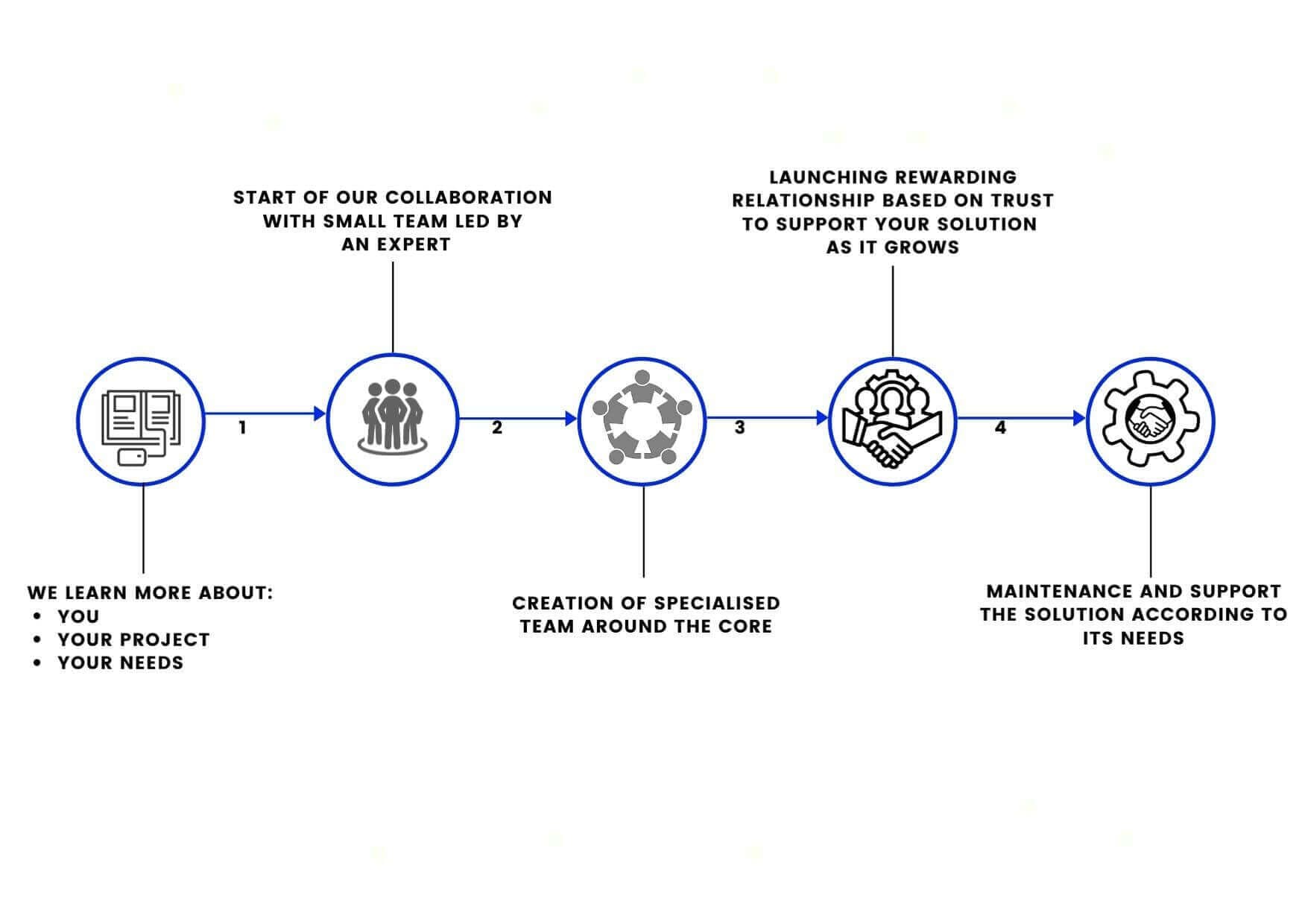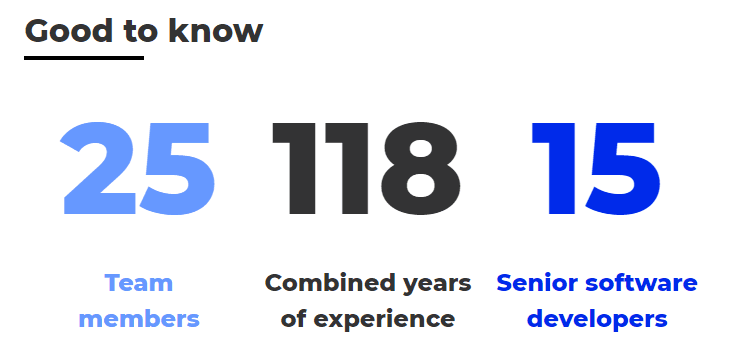Introduction
Time & material and fixed price contracts are the two main types of agreements in the world of IT outsourcing. Which of the two is used for a project is determined on a case-by-case basis, and depends heavily on software development requirements and the allocated budget.
So how does each work, and which one is right for you? The best technology partners will be able to advise on what type of contract is best suited to your software solution. However, it’s important to understand the workings of each agreement independently too. In this article we take a closer look at how time & material and fixed price contracts work in practise, plus the pros and cons of each to help you make an informed decision.
Time & material vs fixed price: How does each agreement work?
A fixed price contract is a single-sum agreement, meaning a software developer completes a project to an agreed overall cost and deadline. The cost is calculated based on an estimate of labour, taking into account the level of seniority of developers involved, and time to completion.
A fixed price contract works particularly well when a project has very clearly defined objectives, wireframes and specifications. The end goal is realized from the start and communicated in detail to a software developer in order to achieve the correct outcome. The success of a fixed price agreement relies heavily on there being no confusion from the outset as to what the end product should be.
In stark contrast, a time & material contract involves a project being broken down into smaller deliverables, with regular payments made as each section is completed. Unlike a fixed contract, time & material agreements offer a lot of flexibility when it comes to adjusting requirements and shifting specifications to meet market demands. For a more detailed overview, don’t miss our dedicated time & materials contract article.
Our process
Time & material vs fixed price: Pros and cons
With the two agreements offering very different options, it may seem like identifying which one a project needs would be obvious. However, it’s not as clear cut as things might seem. Often IT services offer a hybrid option, using both agreements to help fulfill a client’s needs.
There are clear benefits and disadvantages to both these methodologies, let’s break them down to help you decide the burning question: time & material vs fixed price?
Advantages of a fixed price contract:
- Costs upfront: A fixed price contract comes complete with an overall cost to get a software solution developed from start to finish. This can be hugely beneficial when managing budgets.
- Fixed deadlines: A fixed contract requires detailed specifications, with which a software developer can calculate a very strict progress timeline and deadlines.
- Reliability: With a clear and detailed vision of a finished product and when that will be realised agreed at the start, a fixed price contract lessens the risk of any surprises during or after the product has gone live.
- Transparency: The software developer is in no doubt of their objectives, and the client knows the exact cost to be paid – all parties are aware of their obligations from the start.
Disadvantages of a fixed price contract:
- Inflexible: The finished product is a result of exactly what was agreed at the start of the contract. While amendments can be made throughout the project’s development, any additional work can prove timely and seriously affect deadlines. This type of contract makes adjusting to changing demands in the market extremely difficult.
- Miscommunication risk: In order for a software developer to realise a client’s vision accurately requires a lot of in-depth planning – anything less can lead to errors. Objectives should be clearly defined and any potential issues flagged in order to ensure the finished product meets clients’ expectations.
- Scalability: A fixed price contract limits options to scale the development team working on a project should a new deadline be set. What might seem like a small, simple change, could potentially cause problems for the dev team and delays to the overall deadline.
Articles on our blog you may like
Software development outsourcingWhat to consider and how much does it cost?
Posted by Paweł Małkowiak on June 2, 2020
IT outsourcingThe top 7 benefits of outsourced IT services
Posted by Paweł Małkowiak on May 5, 2020
Choosing a technology partner5 main factors to consider when choosing a technology partner
Posted by Paweł Małkowiak on March 12, 2020
Advantages of a time & materials contract:
- Highly flexible: Unlike a fixed term contract, a time and materials agreement breaks down a project into much smaller deliverables, meaning it can easily be adjusted along the way, with features added or removed to meet the customer’s requirements. This agile methodology is particularly beneficial for startups and mid-sized companies, where decisions can be made throughout the process, and strategy and software services can be built simultaneously.
- Super quality: The nature of this kind of agreement always results in regular testing and multiple iterations of a product, which makes for a more superior final outcome. /li>
- Clear costs: Clients are given a clear hourly rate to which developers are working, plus access to a time log so budgets can be constantly monitored.
- Transparency: The time and materials model allows clients access to every stage of development and a project’s progression, with any quality IT vendor presenting regular reports on work completed.
Disadvantages of a time and materials contract:
- Less budget control: Probably the biggest disadvantage of this type of agreement. However, while at first glance a time & materials contract removes an element of control of the overall cost to the client, its agile approach means the remaining scope is constantly adjusted and measured.
- Hands-on approach: In order for a project to be fully realized requires a lot of input and involvement on a client’s side to make sure the vendor is working towards delivering set objectives. Alternatively, it can be an excellent idea to hire a dedicated Project Manager or Business Analysts as add-ons to the development team to cover this risk.
- Uncertain deadlines: The flexibility of a time and materials contract is a great advantage, but it also brings risk if stakeholders add new features and deliverables to the project. It can easily lead to losing the bigger picture and can result in missed deadlines.
- Hard decisions: As a time and materials project evolves, it might come to be that initial plans and requirements are no longer relevant. If that’s the case, a client should be open and willing to adapt ideas in order to meet market needs. This can well work in a client’s advantage, as it may become clear along the way that the scope is smaller than originally planned and fewer developers are needed to bring a product to market. Luckily, development teams like Solidstudio are used to working in ever-changing environments and will be fully supportive and understanding of such situations.
As you’ve seen above, there are clear advantages and disadvantages to both time and material and fixed price contracts. Which best suits your project ultimately depends on how rigid its requirements are. As a general rule, a fixed price contract is best suited to projects with a limited or fixed budget that has very clear requirements and strict deadlines. Whereas a time and material contract lends itself perfectly to a start-up or business where system requirements are vague.
That said, having extensive experience with both fixed price and time & materials contracts, here at Solidstudio we pride ourselves on being as flexible as possible when it comes to helping clients realize their goals. For more information on how a time and materials and/or fixed price contract and how to get the right contract for your project, contact the Solidstudio team here.



